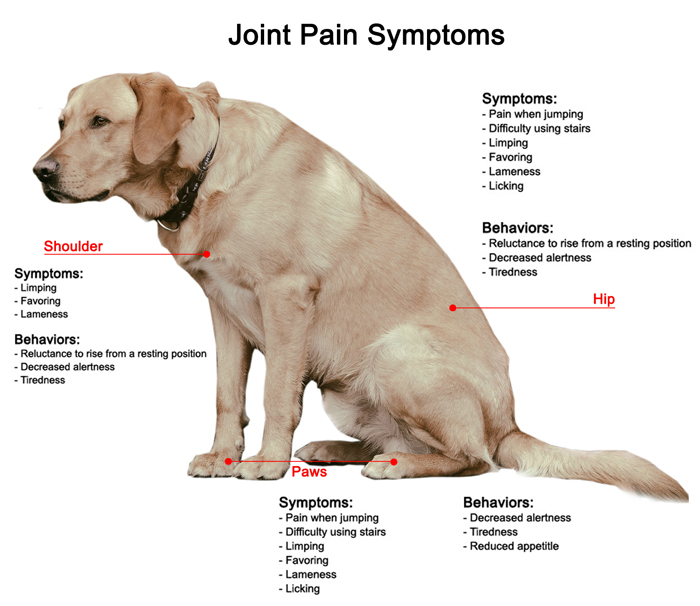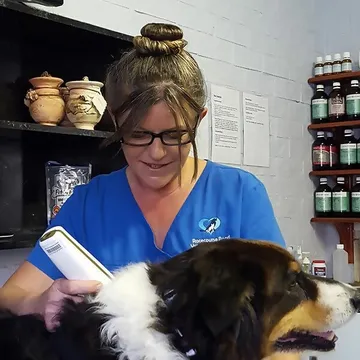Arthritis, also known as osteoarthritis or degenerative joint disease, can affect both dogs and cats. It is an irreversible and progressive degeneration of the joints that involves a loss of cartilage, bony changes and thickening of the connective tissue around the joint. This disease process leads to inflammation in the joints and ultimately pain. Arthritis can be caused from ageing bones and general wear and tear over time however injuries, obesity, breed disposition and poor anatomy can also contribute to issues in younger animals.
The most common signs observed at home in dogs are stiffness, lameness, difficulty rising and pain with manipulation of their joints. Being reluctant to jump can be seen in both dogs and cats. It can be harder to notice signs in cats but they may begin to hide more, are less active and participate less in normal activities such as grooming so they are often seen with an unkempt coat. Irritability or aggression can also sometimes be seen due to the underlying pain.

While it is not possible to cure arthritis, there are many avenues to try to minimise your pet’s discomfort and slow the progression of the disease. A combination of these therapies, or multimodal management, is recommended for success and to achieve the best quality of life. As the disease progresses, we find that the treatment needs to progress with it. Below are different aspects of treatment which should all be considered and or discussed with your veterinarian.
Weight management is one of the single most important factors. Any excess weight will put more strain on the joints. Weight loss can be difficult in aging animals as to not make any signs worse, however, regular low impact exercise is beneficial. This would include activities such as walking and swimming. It is also important to promote activity to try and keep good muscle mass surrounding the joints.
There are some specifically tailored commercial diets targeting joint health by reducing inflammation and improving mobility. Joint supplements may also be added to their diet such as glucosamine and chondroitin which are seen as the ‘building blocks’ of cartilage, or Omega fatty acids (fish oils) are known to aid in reducing inflammation and slowing the progression of the disease. There are numerous versions of these products on shelves but it is recommended to use an animal formulated product; see your veterinarian for advice on this topic.

Promote optimal environmental conditions to help facilitate comfortable movement and decrease pain. Suggestions include having access to comfy bedding, ensure they are warm enough in colder months and remove access to slippery floors or provide traction such as floor mats. If they do need to reach heights then ramps can be helpful as well as providing additional platforms for cats.
After particular injury and joint flare up or if signs of arthritis are otherwise not able to be well managed your veterinarian may suggest the use of medications. The most common of which are called NSAIDs (Non-Steroidal Anti-inflammatory drugs). These medications will usually require prior blood testing to ensure safe use especially since they are often used long term. We use these medications to try and turn down the ‘bad’ prostaglandins which are important mediators of inflammation and pain.
There are various forms of physiotherapy which can be very effective in the management of arthritis. The aims are to strengthen the muscles surrounding joints, improve joint mobility and decrease pain and inflammation. At Racecourse Road Vet we offer Bowen therapy. Canine Bowen Therapy is a profession where the therapist uses manoeuvres over specific muscle, fascia, tendons and ligaments, with the intention of promoting positive health and well-being through myofascial stimulation. It can help dogs feel more comfortable who suffer from arthritis, who are elderly, who are recovering from surgery or even those who are feeling anxious.

This really only touches the surface on how we can help our aging friends. If you suspect your pet may be developing or currently suffering from this disease, please see your veterinarian for a full physical examination of your animal and to discuss options moving forward. It is important to be proactive rather than reactive when it comes to our pet’s health.






